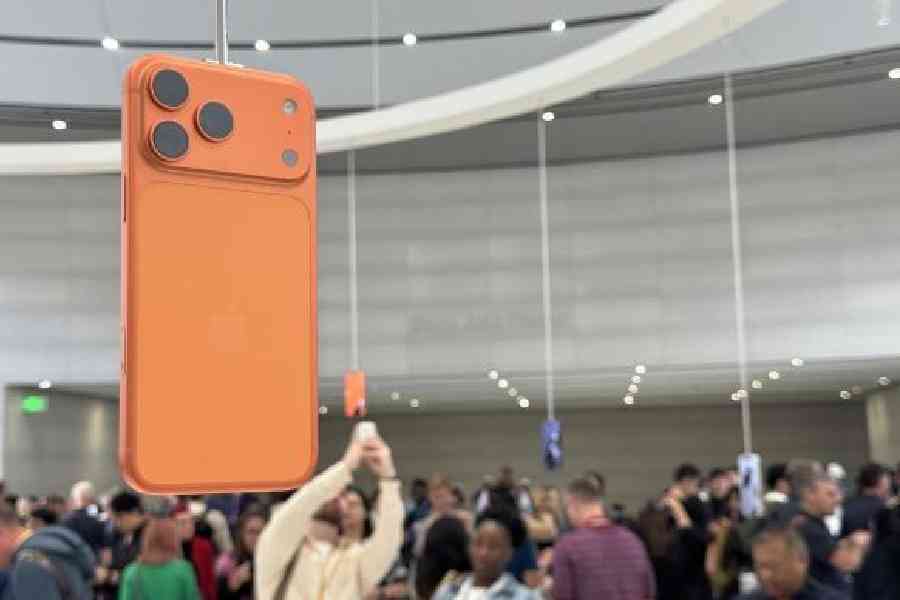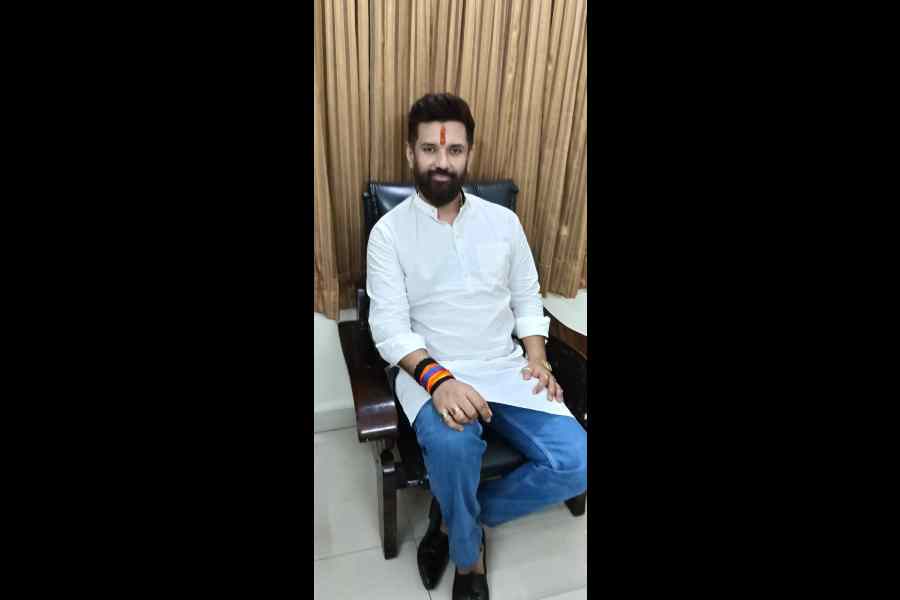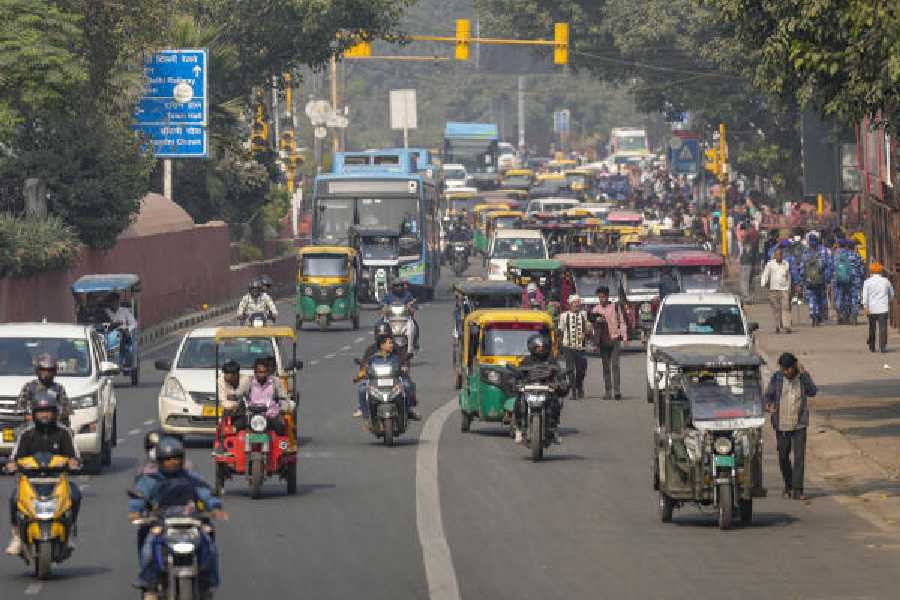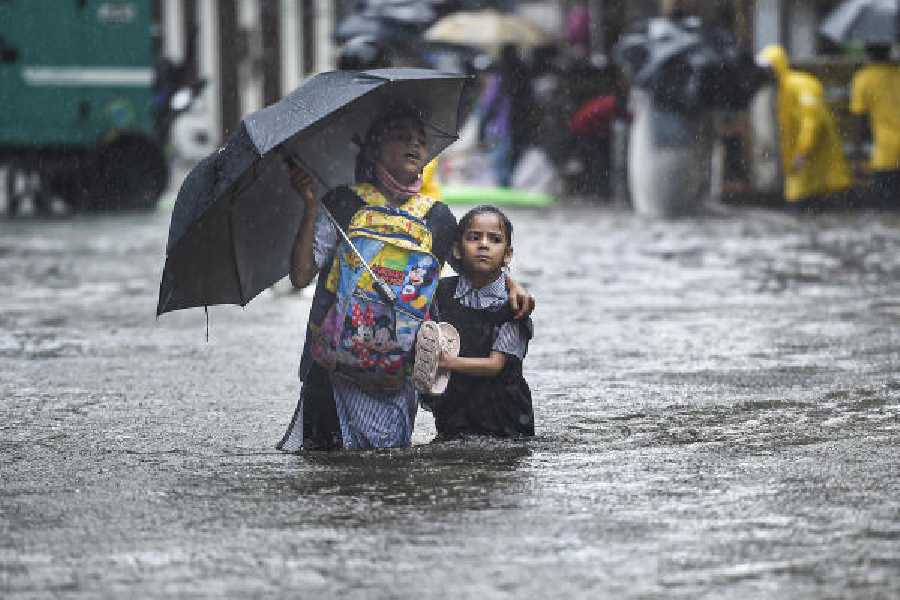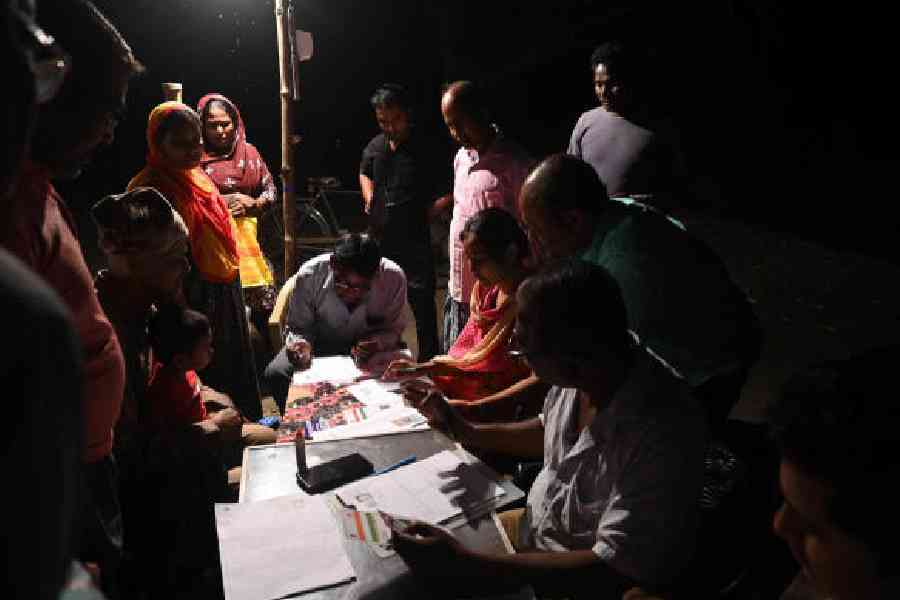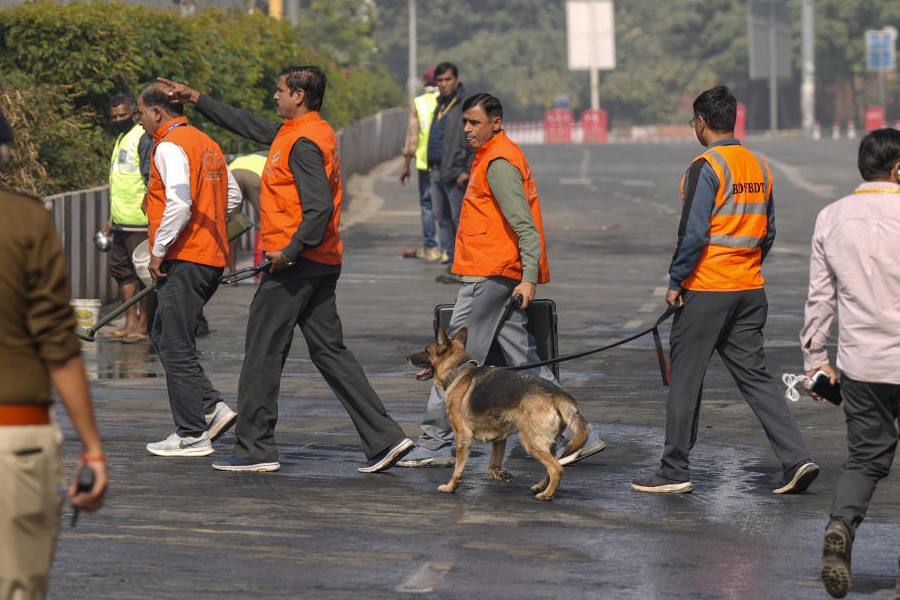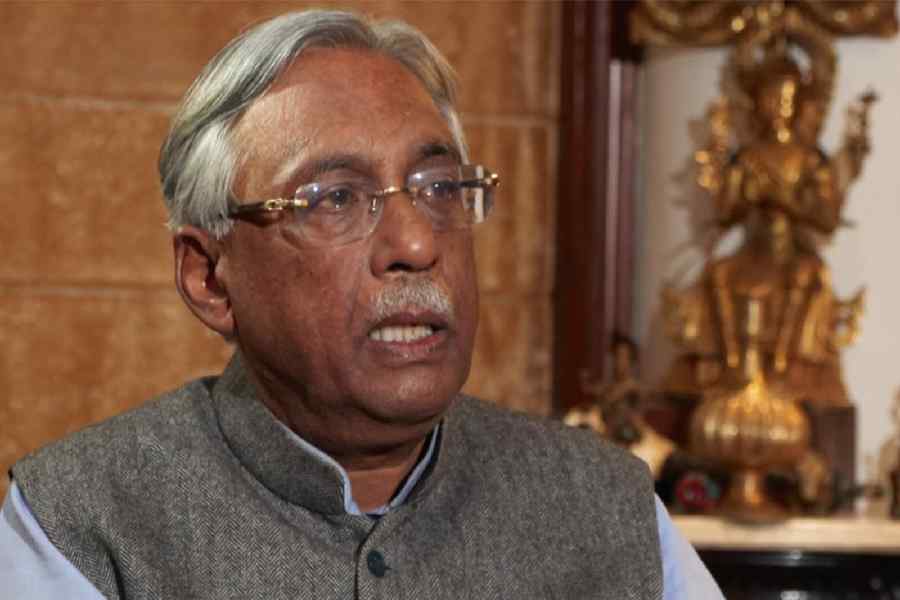Another year and another series of iPhone has arrived. The iPhone 17 series takes the camera and video game to a level that we have not seen on smartphones in the past, be it in the way the image processing pipeline works or how the new sensor on the iPhone 17 Pro and Pro Max functions, offering 48MP telephoto shots. We have been using different iPhones over the years to capture stories and here are five #shotoniphone moments.
Bengali Caesars
People rejoiced and the senate embraced him when Caligula became Roman emperor almost 2,000 years ago. Energy knew no bounds as he slept three hours at night, only to devote the rest of his time to making ambitious infrastructural plans and tax reforms without enough experience. Ultimately, Rome ran out of money. Taxes became the whip of his reign.
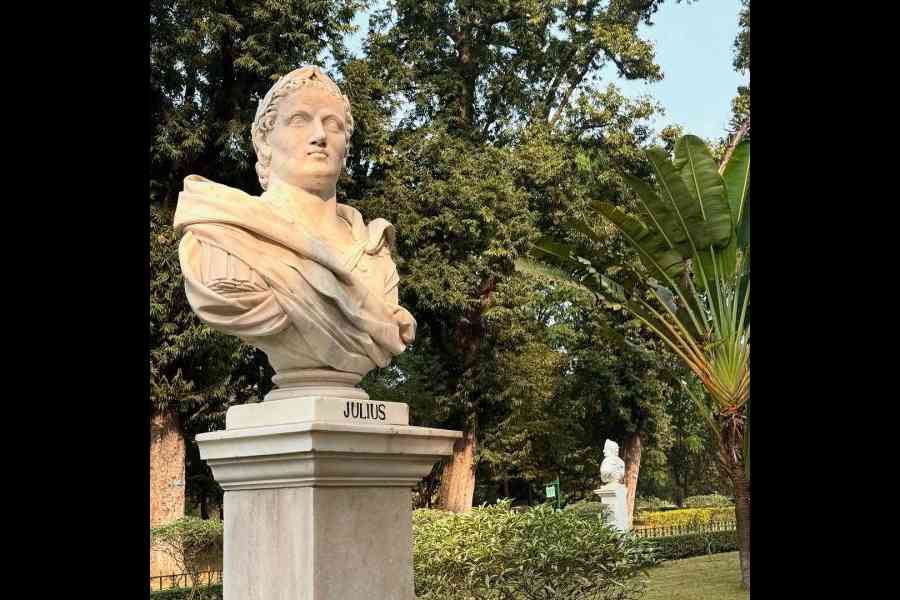
A part of The Twelve Caesars at Victoria Memorial
Yet, when night arrived, all he could do was strike up conversations with the moon. Or, invite his favourite horse Incitatus to dine with him. After four years of speaking his mind, in January 41 AD, the Praetorian Guard had the opportunity to say something on the lines of: “Luca Brasi sleeps with the fishes.”
Now, read these lines standing before the bust of Caligula in the vast Southern Lawns of the Victoria Memorial Hall during a morning walk. Shakespeare may jog up by your side to whisper: “Cry havoc and let slip the dogs of war.”
There are enough Caesars to choose from at Victoria Memorial — 12 in fact. ‘The Twelve Caesars’ have been basking in the sunshine there for a couple of years now, before which they were confined to Raj Bhavan. The lessons they have for the power corridors of any country are ever relevant.
Engraved on the back of the busts is the name of Italian sculptor Francesco Maria Schiaffino (the inscription reads Fran. M. Schiaffini) but the origins of the series cannot be ascertained. The Genoa-born sculptor died in 1763 while Governor’s House was built in 1803.
H.E.A. Cotton’s book, Calcutta Old And New, first published in 1907, refers to the series twice but it doesn’t confirm how it arrived in Calcutta.
Round and round one may go around the Twelve Caesars, ultimately Julius Caesar will catch the eye.
‘The Twelve Caesars’ in Calcutta serve as a reminder that a twist of fate always lurks around the corner, like it did for three Roman emperors Galba, Otho and Vitellius — they ruled for a year and a half in total.
There is, of course, a bigger I-told-you-so lesson the white marble busts riff on — empires fall.
Eating the Bengali dream
It will soon be time to visit a place almost every Bengali wants to be at every year — Joynagar. Actually, I visit Baharu, a few kilometres ahead of the famous town that has become synonymous with a winter delicacy of Bengal — moa.
I have — over the years — added enough experience to my girth to separate the real deal from the zillion fake versions of the sweet that’s sold in markets in Calcutta.
The two-hour drive is often punctuated by a couple of tea breaks and Hemanta Mukherjee’s ever-soothing voice. After all, it’s a trip to a town he called his own for the first eight years of his life.
Baharu, where the actual ‘moa action’ lies, is usually reached at 7.20am and without wasting time I visit Shyamsundar Mistanna Bhandar, one of the oldest shops here selling authentic Joynagar-er moa.
There are plenty of addresses that sell a superlative version of the fare I am after. If you are in Bengal in winter, moa is a must-have. These are small balls of popped (and not puffed) rice or khoi mixed with nolen gur (liquid date palm jaggery), ghee and more than a handful of pistachio, cashew… stuff that adds a jiggle to the waistline.
Like with many sweets across India, it’s almost impossible to trace the origin of moa. What I am sure of is Baharu and Joynagar have been enjoying these 50-75g globes of delight for a very long time but it was only in the late 1920s a formal branding was given when Purnachandra Ghosh (Purna) and Nityagopal Sarkar (Buchki) of Joynagar came up with their shop Shri Krishna Mistanna Bhandar (it’s still there and doing brisk business).
Two ingredients are integral to the sweet — khoi, which comes from Kanakchur paddy, and nolen gur. In fact, you cannot leave Baharu without buying a couple of clay pots filled to the brim with the golden goodness.
There are a couple of issues that pop up from time to time, like finding enough seulis (tasked with working on the palm trees) and top-quality Kanakchur paddy, yet Baharu is the place to visit this winter. If not anything, it will set you free from the mundane city scenes.
When the Czechs arrived in Konnagar
A few kilometres drive from the heart of Calcutta will bring you to something that has always been at the heart (and feet) of any Bengali — the name Bata. Yes, the Czech brand nursed dreams in Konnagar before moving to Batanagar. These are the remains of their early tryst.
The First World War was over and Tomas Bata was on a ship to India in 1924 breathing in air full of hope that peace was here to stay and freedom for world trade. Two or three years down the line, Bata had retail shops in India and going by the brand’s reputation, things should have been fine.
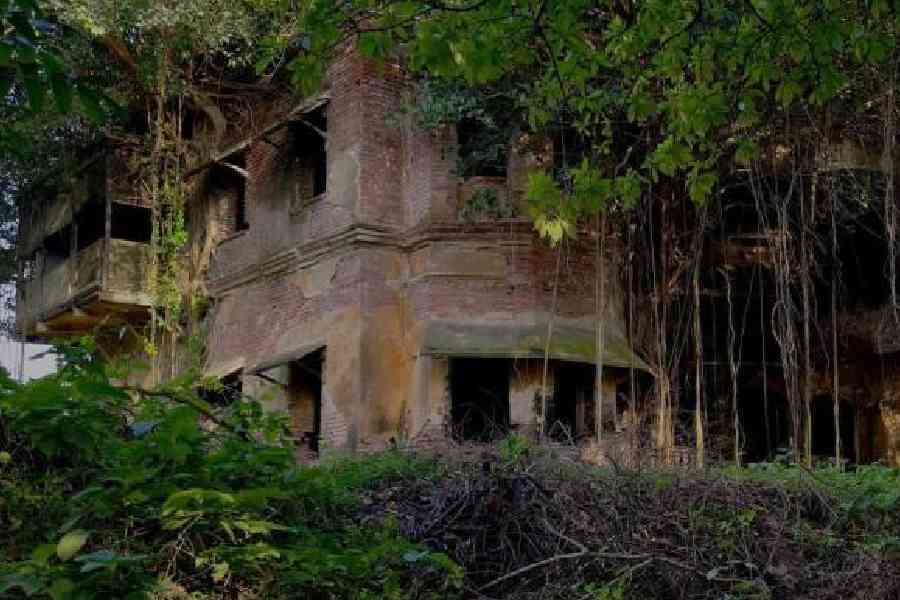
The Konnagar building from which Bata originally operated in India. Picture: Mathures Paul
Business was conducted on an import-export basis, exporting shoes from Zlin and buying raw hide, cotton and jute from India. The company’s manager in India was Ladislav Ploskal, whose immaculate appearance made him quite a name in Calcutta’s social circles. Ploskal knew “everybody who was anybody” except his rivals. For Japanese exporters, India was an easy target to sell cheap plimsolls or canvas-rubber shoes.
Tomas couldn’t feel the pulse of the market sitting in Zlin. He landed up Calcutta, once again, in 1931. He realised the problem: There were millions of bruised feet on the street looking for inexpensive shoes.
Ultimately, ideas and changes in the business found their freedom during a dinner with Ploskal at a posh Calcutta club. Tomas spoke up, towering over his man until Ploskal, pale with anger, left the club.
When hell breaks loose, fresh ideas flow. Tomas finished the calculation on production costs for canvas shoes in India. Sadly, Tomas died in a plane crash soon after. It was up to his successor to get things done.
A band of Batamen arrived and soon operations were rolled out of Konnagar. And during the closing months of 1936, arrangements were completed to produce leather footwear at a new address — Batanagar.
Meanwhile, winds were once again turning and the second Great War was approaching. Bengalis quickly slipped into Bata shoes and walked back to the comforts adda and telebhaja bring.
For me? It won’t be Durga Puja without a new pair of Bata shoes.
Remembering Hiralal Sen
Finally, it all went up in smoke, not just the work of a lifetime but one of the most important chapters in the history of Indian cinema. Hiralal Sen was a broken man. Soon after, he too left.
All this and more came to mind as I stood outside 85/2 Masjid Bari Street (in Calcutta) where he stayed for some time, reminding me of what could have been.
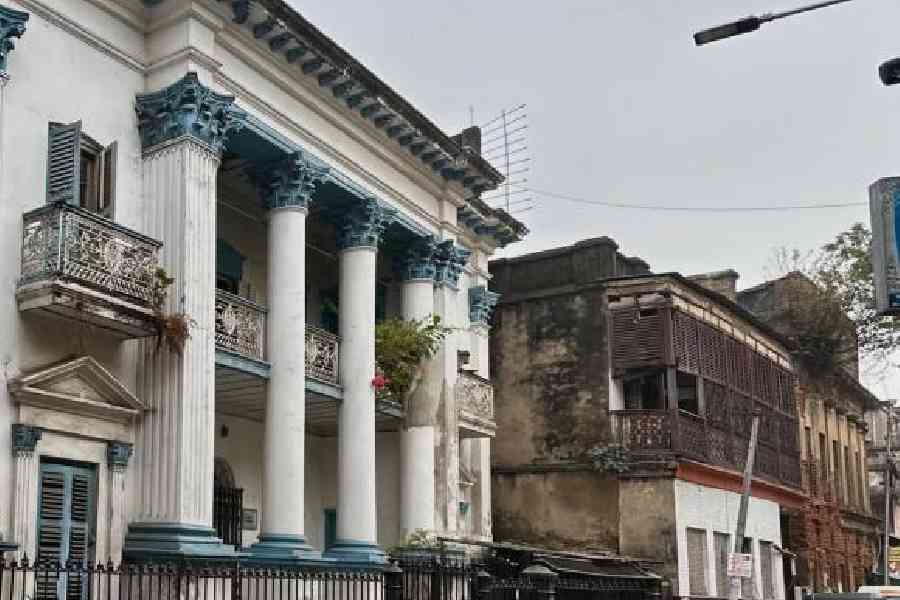
Hiralal Sen briefly lived at 85/2 Masjid Bari Street
In Bombay, Harishchandra Sakharam Bhatavdekar saw the cinematography exhibition by the Lumiere Brothers in 1896 and the overwhelming response made one Professor Stevenson present the ‘Bioscope’ at Star Theatre. A young Hiralal Sen was in the audience. Head over heels with what he had seen, Sen wanted to learn the craft from Stevenson; nobody knew how that went. But two incidents followed. First, Sen ordered all the Bioscope equipment from a London company (probably Warwick Trading) and he shot a dancing scene from the opera The Flower of Persia.
A son of Chandra Mohan Sen and grandson of Gokul Krishana Sen of Dhaka, the young man was always interested in photography. He had won several awards and his photography studio was called H.L. Sen and Brothers. Once Bioscope entered the scene, it became Royal Bioscope Company in 1902. Meanwhile, with some help from Amarendra Nath Dutta, an important figure on the theatre scene, he captured shots from stage productions like Sarala, Bhramar and Sitaram. The partnership led to Alibaba and the Forty Thieves (reported to have been shown at the Classic Theatre in 1904).
This was just the beginning. On December 28, 1902, The Bengalee reported that Sen had purchased his own movie camera for shooting “impressions of Indian life and scenery”. It was an era of pioneering individuals — Dadasaheb Phalke, Dhiren Ganguly, Himanshu Rai (The Light of Asia) and Chandulal Shah (Gun Sundari).
Sen was probably the first person to make at least two advertising films in India — for Jabakusum hair oil and Edwards Tonic, an anti-malarial drug.
But all these things came to naught as financial support for his dreams faded. A fire at the storehouse of his films destroyed all his work, two days before his death.
Dumraon on Camac Street
The first time I heard of Dumraon in Bihar was probably in late 1996, when a piece of a half-masticated steak was clearly visible as my grandfather lost control speaking about the ‘Laloo Prasad Halt’.
It was a series of unauthorised stops that had become “integral” to train travel in Bihar. It was also the time when a school friend of mine had introduced me to the joys of walking down Calcutta’s Camac Street, past Dumraon House. I later found out that shehnai maestro Ustad Bismillah Khan’s birthplace was Dumraon. Very little of old Camac Street remains of which Dumraon House is an important part.
The Dumraon Raj was for long integral to the royal history of Bihar. Once considered a family of liberal landholders, among the oft-spoken members was Maharaja Maheshwar Baksh Singh, who took a keen interest in the reception of the Prince of Wales’ visit in 1875-76. The family apparently earmarked a princely yearly sum of Rs 7,800 for the maintenance of an English entrance school as well as several primary schools.
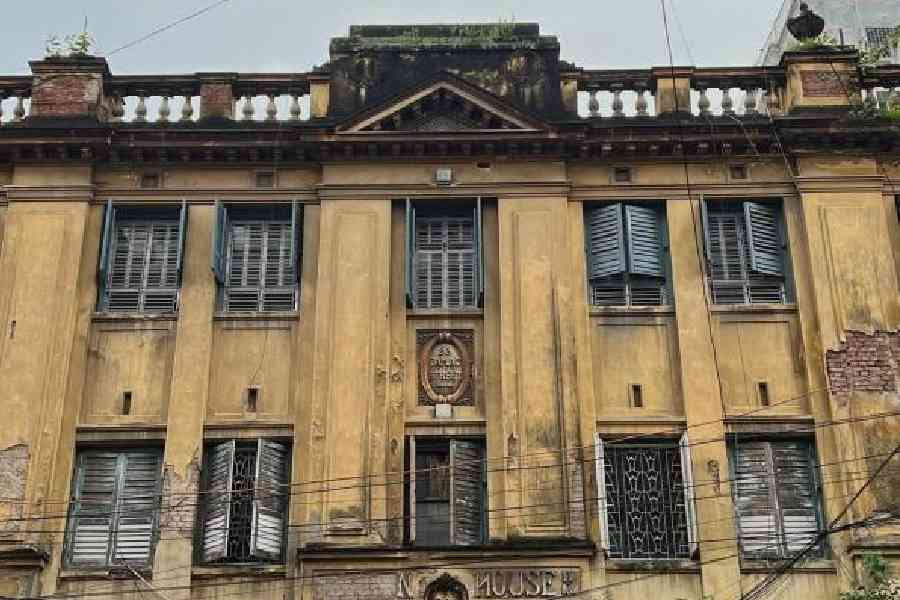
Dumraon House on Camac Street
Prosperous times continued under Maharaja Radha Prasad Singh, who was keen on advancements made possible by science. His death slowly marked an era of churn. By the time Maharaja Bahadur Sir Keshav Prashad Singh passed away in 1933, the treasury had been depleted. Yet, properties were acquired beyond Bihar, like the one on Camac Street (constructed in 1922). When Ram Ran Vijay Prasad Singh became the Raja, fortunes were somewhat revived but it was perhaps a little too late
The family remains in the news for Shivang Vijay Singh — the grandson of the late Kamal Singh — who has thrown his hat into the political arena a couple of years ago.
By the way, weeks after the masticated steak was seen in 1996, my grandfather popped off, nothing to do with the ‘Laloo Prasad Halt’ but perhaps the uncertain moments Indian politics have always managed to throw at us.

